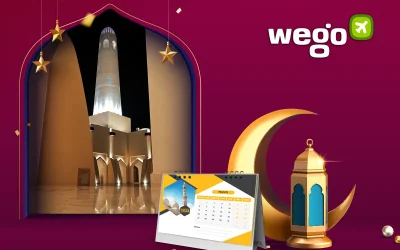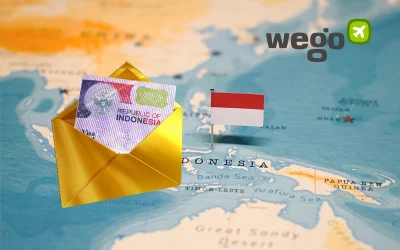Princess Marasigan was awarded first runner-up in Wego’s life-changing travel story in the Philippines contest. Her story is one of nostalgia and rediscovery of Gubat where she spent summers with her family. Princess highlights how travel experiences throughout your life cannot be precisely repeated, but can often provide us with insights into ourselves we may not notice over the passage of time. You can see more of Princess’ writing on her blog at Hello Philipinas!
When I was growing up, there were no smartphones, no Instagram, no selfies. When you traveled out of town, you carried an SLR camera which did not have a “Delete Image” option and this limited the number of pictures you took.
I, however, do not consider this unfortunate. I believe there are some places that you take pictures of to keep them from fading from memory. And then there are places that you never get to capture in photos but whose memory never fade just the same. For me, one of these places was the small town of Gubat in Sorsogon, Bicol. It was the hometown of my grandfather on my father’s side and our family’s summer destination since I was a eight.
The town of Gubat barely has any claim to fame. It’s the small town that you pass through or stop at to ask for directions when visiting neighboring, more famous destinations””like the church ruins of Barcelona or the whale sharks of Donsol. What probably puts Gubat in the tourist map is Rizal Beach. Other than that, Gubat’s attraction lies mostly in its small-town-by-the-sea charm. It had the elements of your standard Philippine rural town””an old church, a plaza, a bustling marketplace and townspeople who basically knew everybody else. There was also a concrete pier where locals rode bikes, flew kites and hung out to enjoy the breeze.

Our house was a modest but large bahay kubo (nipa hut), with walls and a floor made of slats of bamboo. The house was raised two feet from the ground, so that geese can take shelter underneath. I can’t possibly count how many playing cards and coins have slipped and fallen through the bamboo slats of that floor through all those summers. All fallen items were considered lost since nobody wanted to crawl in the dirt under the house to make the recovery. My favorite part of the house was the large balcony in front. It’s where I would finish my coffee early in the morning, where our family would eat merienda (snack) of soft drinks and sinapot (banana fritters) in the afternoon and where we would sip hot chocolate at night while listening to crickets outside.

When I would wake up early enough, I would take a walk with my grandfather across the plaza towards the pier. Since it was facing east, the pier gave you a great view of the sunrise. The walk also gave me a chance to spend some time with my grandfather. I did most of the talking since my grandpa was a silent chain-smoking old man who had few words but long reserves of patience. I suppose it’s because he lived alone. He never woke me up during those mornings to ask if we were going to the pier. If I woke up late, then we didn’t. But if I did, he was just there, ready to take a walk with me.
We would go down to Rizal Beach around four in the afternoon, once the weather cooled down. We made this afternoon trip to the beach almost every day, but it was always the first afternoon that was the most exciting. Riding in the family car, my siblings and I would stare out the window, anticipating those first moments that we would catch a glimpse of the blue waters between the trees. Rizal Beach did not have the white sands of Boracay or the brilliant aquamarine waters of Coron, but for me who grew up in a congested apartment row in Caloocan City, it was more than enough. In between swims, we would munch onkropek (shrimp crackers) or other chichiria (crunchy snacks) bought from one of the cottage stores.

When I was in my last year of college, I had planned to spend several weeks in Gubat. It was supposed to be one of those “one last summer of fun before I officially became an adult and face the real world” kinds of trips. A few days before I graduated, my father got a call from a relative in Gubat. My grandfather died early that morning. He had a heart attack while having his usual morning coffee and cigarette.
That summer, I did go back to Gubat along with my family. But instead of returning to the familiar sanctuary of my childhood, I had one of my first introductions to adulthood and the loss that came with it. That was more than five years ago and I never returned to Gubat since then.
Yet not a week passes by that I don’t see it in my mind. This place changed me because it made me realize something essential in travel and in life””that there are some places that you leave but cannot leave behind. Sometimes it’s because it reminds you of a person you loved and lost. Sometimes it’s because it reminds you of yourself in another time”“more innocent and whimsical. Most people have their own versions of Gubat””you who are reading this probably do too. Perhaps, like me, you never had the chance to take enough pictures of this place. Even if you did, you know that there are some facets of that place that even the most vivid photographs cannot capture. How do you capture the subtle shift of sunlight through the leaves of a mango tree, as you lay in a hammock underneath? How do you capture the taste of kropek coupled with the wet sand sticking to your toes as you sit on the beach watching the sun set? I learned that it was sometimes the small, trivial and un-photographed moments between adventures that stand out the most in any trip. And that you just had to live in these moments until they pass by and become irretrievably lost, like worn-out playing cards slipping through bamboo slats on the floor of an old nipa house.











